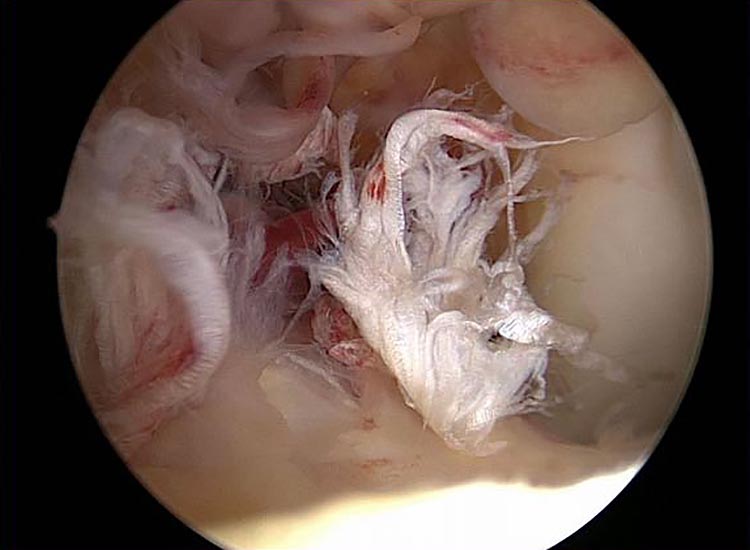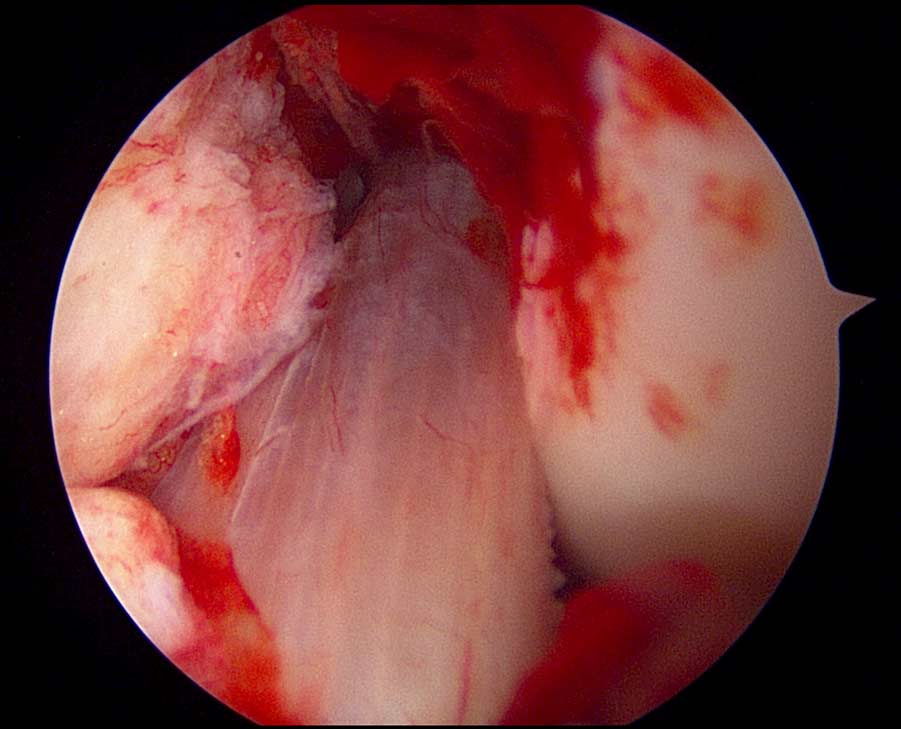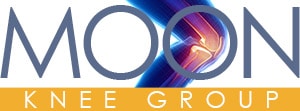What You Should Know About ACL Graft Choice
Patella tendon graft prepared for ACL surgery. Photo: Cleveland Clinic Sports Medicine
The replacement ligament or tendon (called a graft) chosen for your surgery has the largest controllable impact on your risk of retearing your ACL.
Every anterior cruciate ligament reconstruction (ACLR) has a risk to retear. Research shows each graft type comes with a different retear risk.
Based on your age, sport and activity level, the differences can be significant. You can calculate yours here.
Autografts and Allografts
With autograft, the replacement tendon comes from your knee, hamstring or quadriceps. With allograft, it comes from a cadaver, often the Achilles tendon at the back of the heel.
On average, autograft using a patella tendon (from your knee) has the lowest retear risk. Allografts have three times the retear rate of autografts. The younger you are, the more this matters.
Our recommendation: know your retear risk when discussing graft options with your surgeon.
On This Page
If your goal is to minimize your risk of a retear, graft choice is your most important decision. Your primary criteria should be retear risk.
What You Need to Know About Grafts from the Research
Here’s what MOON Knee Group research says about ACLR graft options:
- The younger you are, the more likely you are to retear your ACL. Many medical professionals believe this is because young people are more active.
- Another way age matters: The younger you are, the larger the differences in retear risk for different graft types.
- Bone-patellar tendon-bone grafts (taken from the kneecap) have the lowest retear risk.
- For some high school and college athletes, grafts using hamstring tendons have similar retear risks as bone-patellar-bone. On average, the retear risk with hamstring grafts is higher.
- An allograft, where the replacement tendon comes from a cadaver, is three times more likely to retear than an autograft. This is true no matter your age. However, the difference in retear risk is significant only for younger patients, especially those 22 and younger.
- Choose between graft types using the absolute difference in retear risk, not the percentage difference.
- Males and females have the same retear risk for reconstructed ACL. Females do have a higher risk of initial ACL tears.
- Graft type does not impact the post-surgery functionality reported by patients. You’ll run as fast, jump as high and change direction the same with any graft type.
These results come from MOON Knee Group’s long-term study of 3,500 ACLR patients at seven institutions in the US. More than five dozen papers have been published based on this research.
First Determine Your Retear Risk
Why should the lowest retear risk be your most important criteria in graft choice?
- No graft type provides a performance or function advantage. You won’t be faster, quicker or jump higher because of the graft type.
- Return to sport and activity levels are the same. No autograft type is more likely to get you back on the field or court.
- Side effects are rare for all graft types.
- All graft types respond equally to rehabilitation. You can reduce your retear risk the same 40 to 60 percent with any graft type by fully completing rehabilitation and taking part in return-to-sport training.
- You cannot make up for the retear risk of your graft choice in training. The healing and strength of your reconstructed ACL is separate from the supporting muscles and tissues.
- ACL surgery and rehabilitation is a major disruption to your sports and activity participation and your life. If you retear your ACL, it will take another nine to 12 months of the same hard work and discomfort to return to your activity.

Ask Yourself:
What increased failure risk are you willing to accept for any (mostly short-term) benefit from a higher risk graft type?
Focus on the Absolute Difference in ACL Graft Retear Risk
When comparing graft types using the ACL retear risk calculators, use the absolute difference. That is, subtract the lower retear risk number from the higher retear risk number.
Use the difference between the two numbers to determine your graft choice (see the guide to the right or below on mobile).
Why use the absolute difference? Because percentage difference is misleading:
- If one graft type has a four percent retear risk and another three, the absolute difference of one is insignificant. You can expect similar results with either graft, just as when two retear risks are nine and 10 percent.
- If one graft has a 12 percent retear risk and another 16 percent, the percentage difference is also 33 percent. But the absolute difference of four is cause for concern.
Talk With Your Doctor
Calculate your expected failure based on the risk calculators and discuss with your doctor the advantages and disadvantages of each autograft type for you.
Retear Risk Guide
When the absolute difference between retear risks is:
- Less than three: Choose either graft type. On the calculator, both grafts are shown in green.
- Between three and five: Favor the lower risk graft. On the calculator, the higher risk graft is shown in yellow.
- Above five: Eliminate the higher risk graft. On the calculator, the higher risk graft is shown in red.
Rehabilitation Can Reduce Retear Risk by 40 to 60 Percent
Regardless of the type of graft used, you can reduce your risk of a repeat ACL tear by 40 to 60 percent by following MOON Knee evidence-based rehabilitation therapy coupled with a return-to-sport program.
All patients should participate in rehabilitation programs before resuming normal activities or returning to sports. Even after six to nine months of recovery, you may still have neuromuscular deficiencies that require fine-tuning.
ACL Graft Type Descriptions
Below are brief descriptions of each graft type. (Go here for a description of ACL reconstruction surgery.)
Your surgeon will recommend a graft type for you based on your age, sport, position, goals, available time and commitment to rehabilitation, plus any additional injuries in your knee and leg.
The medical community continues to debate the benefits of different graft types. The conversation is evolving. We describe each graft type with general information about the failure rate from the MOON study and what this might mean for your choice.
Know your failure risk for each graft type by using the graft risk calculators.
Patellar (Knee) Tendon
This autograft type is often called bone-patella tendon-bone (BTB). The patella tendon connects the kneecap and the tibia (shin). The surgeon will remove 9 to 10 millimeters from the middle third of the tendon, keeping small blocks of bone at each end. The surgeon then inserts and fixes the bone blocks inside the tunnels drilled in the thigh and shinbones for the replacement ligament.
BTB autografts have the lowest retear risk.

Hamstring Tendon
In a hamstring autograft, multiple bands are taken from your hamstring tendon along the back of your thigh. These bands are joined and fixed into the tunnels in your femur and tibia to reconstruct your ACL. While in some cases hamstring grafts may have a similar retear risk as patella tendon grafts, on average the retear risk with hamstring grafts is higher.
Quadriceps Tendon
Using bands from the quadriceps tendon to replace an anterior cruciate ligament is a newer development. The surgical technique is similar to using the hamstring tendon. As ACL reconstruction outcomes using quadriceps tendon are not studied in MOON research, there is currently not enough data to draw any conclusions about this graft type.
Allograft
An allograft comes from a cadaver, often the Achilles tendon. This means there is no second surgical site on your knee or thigh. Yet many surgeons no longer use allografts in young patients. As noted above and elsewhere, allografts are three times more likely to retear than autografts.
This is significant for those 22 and younger. Every competitive athlete younger than their mid-twenties should elect ACL reconstruction using autograft.
For those in their mid-twenties and older, the absolute gap between the two methods becomes insignificant. And those older than their mid-twenties suffer fewer ACL retears overall (research so far provides no conclusive reason for this).
Was This Content Helpful?
Share via:

